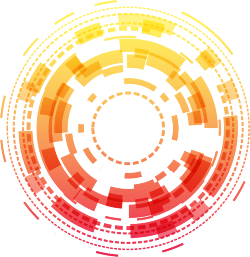The advent of artificial intelligence has consistently altered the landscape of data processing and analysis. Recently, Mistral, a Paris-based company, unveiled their Optical Character Recognition (OCR) API, a cutting-edge tool that promises to revolutionize how developers handle PDF documents. With the ability to transform static content into AI-friendly formats, Mistral’s innovation raises critical questions: Can this technology genuinely break the chains that bind PDF data to obsolescence, or is it just another spark in a crowded technological marketplace?
The Challenge of PDFs in AI
For years, PDF documents have posed an insurmountable barrier to AI models when it comes to making sense of their complex structures and linguistic nuances. The limitations of traditional Retrieval-Augmented Generation (RAG) methods mean that vast treasure troves of information remain largely unexplored. Many have tried to bridge this gap, but until now, open-source developers have frequently been left to cobble together makeshift solutions. In this context, Mistral’s OCR API appears as a radiant beacon, promising to facilitate efficient data extraction from PDF files.
What sets Mistral apart? The company claims that its OCR API can dissect intricate document elements—text, tables, media, and mathematical equations—with a level of precision previously unseen in open-source tools. This suggests a transformative capability that can level the playing field for developers who were thwarted by inefficient alternatives. The speed aspect is equally noteworthy; the API’s reported ability to process up to 2,000 pages per minute on a single node is a game changer that could catalyze the development of more sophisticated AI applications.
Operational Advantages and Competitive Edge
Mistral asserts that its solution outperforms established competitors such as Google Document AI, Azure OCR, and even GPT-4, particularly on “text-only” documents and within multilingual contexts. These are bold claims, but the unequivocal edge in speed and efficiency paints a promising picture of the OCR API’s capabilities. Such differentiation could be a decisive factor for developers choosing the right tools for their projects.
The API also introduces an innovative capability that allows developers to use the document as a prompt for AI agents. This aspect brings interactivity to what has historically been a very static process of document analysis. It aligns with a broader trend in technology: moving from passive data collection to active, intelligent engagement. If executed correctly, this could substantially alter the way we interact with documents, enabling more dynamic interpretations and applications of content.
The Potential Risks and Pitfalls
Naturally, with any new technology, especially one as ambitious as Mistral’s OCR API, there are inherent risks. The initial enthusiasm could cloud critical judgment, leading developers to overlook potential shortcomings. Despite high accuracy claims, users should approach the tool with cautious optimists. An overreliance on automated systems may inadvertently lead to decreased attention to content nuance and context. If developer teams don’t remain deft in their analysis and interpretation skills, they might find themselves ensnared in an over-reliance on the AI.
Moreover, while Mistral promises efficient processing, will it yield equally to diverse document formats? Documents laden with differential design elements or older formatting styles may not receive treatment as nuanced as that promised, exposing developers to unforeseen challenges. The thrill of a new tool can quickly transform into disillusionment if the wind doesn’t blow in the right direction.
The Community’s Role and Future Possibilities
With Mistral positioning its OCR API as a tool tailored for developers, the next immediate challenge will be community engagement. Open-source enthusiasts thrive on collaboration; therefore, the response from this community could make or break the long-term viability of the API. Mistral must foster environments that encourage developers to experiment, report feedback, and suggest improvements for this technology. Involving the community deeply could coalesce into a robust repository of knowledge, ensuring that the OCR API continues to evolve.
While the Mistral OCR API introduces an exciting capability for transforming the largely dormant area of PDF analysis, its true test lies ahead. The landscape of document processing is complex, densely populated with challenges. However, if Mistral navigates these waters with open-mindedness and collaborative engagement, we may soon find ourselves standing at the precipice of a new, dynamic era in AI-driven document analysis.


Leave a Reply